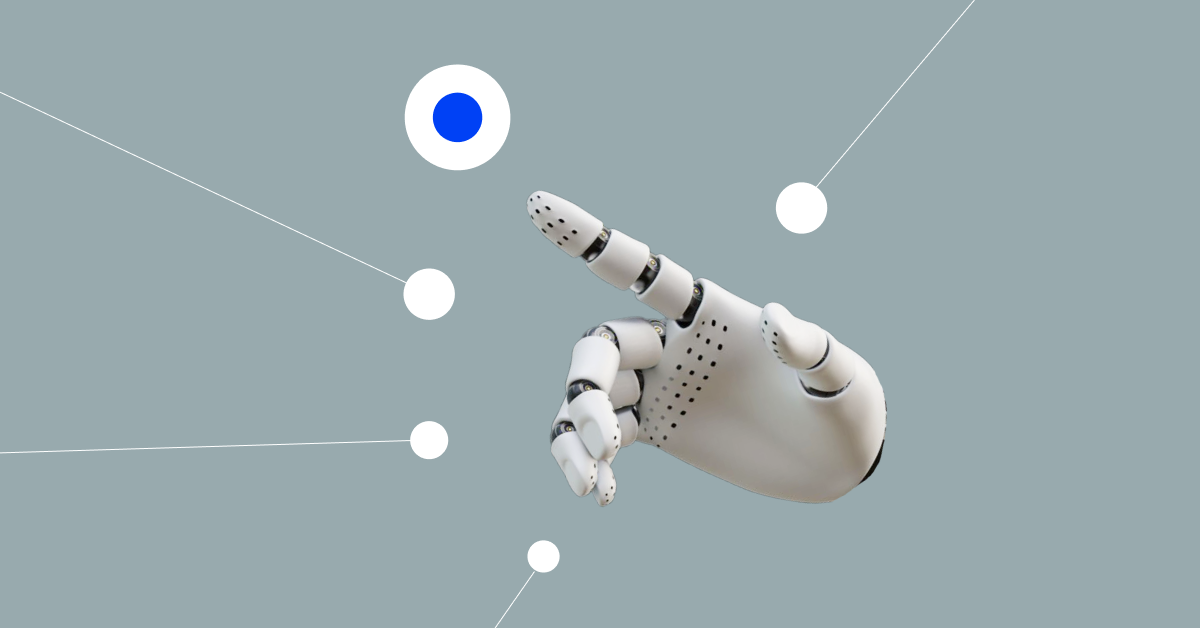Generative AI for IT Operations: Your questions answered

IT leaders are thrilled about the potential of Generative AI for IT Operations. But they also want to know how it works, why it works, and what it will do for them before taking the leap and adopting this new technology.
Allow me to share my perspective on the hype and the truth behind generative AI. I’m the Field CTO for BigPanda, Operational Intelligence and Automation driven by AIOps. And I’ve been running experiments with large language models and generative AI technology that were so impressive that we changed the course of our roadmap this year to deliver a generative AI solution to our customers as soon as possible.
Yes, there is hype around AI. And yes, there are reasons to be skeptical. Yet Generative AI is already shaping the way we think about IT Operations. So let me answer your questions, explain the basics of how this works, and share how Generative AI lets ITOps teams stay ahead of the curve.
How generative AI in IT operations works
Generative AI is an advanced form of AI that utilizes large language models to rapidly analyze vast amounts of data, process complex patterns, and generate insightful responses. And when good ‘contextualized’ data is used, it produces rapid, accurate, and high-value analysis in natural language.
Within IT operations, Generative AI can analyze incidents, identify patterns, summarize them, suggest root causes in real-time, and provide valuable insights to operators. It can also act as a smart assistant for ITOps, SREs, and DevOps teams, greatly reducing stress and improving incident response. Our early adopters found it greatly reduces the amount of time spent per incident. Generative AI ultimately provides IT teams with another pair of eyes, like having a full-stack engineer instantly available for any question.
Your generative AI questions, answered
I’ve been talking with many IT leaders who are thrilled about these potential benefits. Still, they question Generative AI’s data security, reliability, workflow integration, and the conditions needed for successful deployment. Here are some of the answers to the questions I often hear about using Generative AI in IT Operations.
How reliable is generative AI?
Engineers know that a wrong call could cost a company significant amounts of money, damage their professional reputation, and turn a prolonged P3 incident or outage into an emergency that causes the company to scrutinize their ITOps department.
Given this, accuracy is a must, and BigPanda Generative AI delivers. Understanding accuracy was our chief KPI in our early tests with customers, and it produced amazing results. We also found times when our Automated Incident Analysis (AIA) suggested gaps while speculating root causes in process and observability.
Accuracy breeds trust, and AIA’s insights have been observed to outperform engineers and be more precise in answers without typical ‘hand-waving’. This level of accuracy translates to quicker incident resolution and reduced downtime. However, you’ll need good data to ensure Generative AI reliability.
BigPanda ensures that contextualized data is being used by ingesting six sources of enrichment data, which includes CMBD, CI/CD, and change data. This context-aware information is enriched with correlated alerts, which gives the Generative AI a much deeper understanding of application topology.
These relevant data enrichment sources form highly accurate assumptions, pinpointing incident impact in distributed IT systems. Having a methodology that follows a context-enriched data strategy is paramount to receiving results tailored to your unique environment and use case. It is the primary contributing factor to why BigPanda was able to bring to market the first answer and capability in IT Operations before the competition.
Will generative AI work with our data?
Data quality is a crucial factor in the success of Generative AI. But with data quality, it’s ‘garbage in, garbage out.’ For instance, many AIOps platforms don’t enrich alerts with descriptive metadata, which limits the use cases Generative AI can be applied, such as querying data, or only offering a basic post-mortem root cause analysis. Without enrichment, you can’t provide visibility into incident impact or suggest probable root cause in real-time.
High-quality data is essential for training AI models and ensuring accurate results. But if your data isn’t quite where you want it, that can be fixed with an AIOps vendor who provides enrichment and correlation. That’s why companies need to focus on data enrichment and integrity to maximize the potential of Generative AI in IT Operations.
The ultimate aspiration of many IT organizations is defining and understanding when something will go wrong in the future or why something is failing without being observed as failing. This is the power of context – context-rich data adds awareness to situations that you may not be able to observe or monitor so that you can respond or react. AIOps platforms like BigPanda drive context into incidents, shining lights on the unknown and unmeasurable in order to provide awareness and context to Generative AI.
Is generative AI secure?
Yes, but it can depend on the platform you are using. You’ll want to understand the security measures in place, especially when dealing with sensitive data. Be sure to ask how your Generative AI platform and any third-party vendors handle data, ensure compliance, and maintain data security when adopting this technology.
It’s for these reasons that for BigPanda Generative AI, we follow industry and international best practices such as SOC 2 Type II, CCPA, and CPRA for data privacy, data protection, data usage, and data retention. We also adhere to a zero data retention policy, meaning that the data you provide doesn’t feed into training other models and safeguards your privacy and information security.
We also require that our customers opt-in to use BigPanda Generative AI, ensure that data residency is in the United States, and have an Enterprise Agreement and Data Processing Agreement (DPA) in place. You can learn more about our Data Security and Compliance information by visiting our security documentation page.
Will generative AI replace ITOps teams?
Generative AI is not intended to replace human practitioners but rather to act as an assistant or tool that helps them do their jobs better. AI can fill the skills gap by translating complex technical issues into easy-to-understand terms, making it easier for all individuals to understand the implications and probable resolution paths. While it can provide valuable insights to practitioners, it is nowhere close to being able to replace skilled IT professionals.
Let’s use (in my opinion) a mislabeled capability sold to the masses: the autonomous driving car. Autonomy, by its very definition, is a self-governing process or system requiring no human intervention. Yet, how many self-driving cars are there on the market without steering wheels?
The same can be said about Generative AI and its application to human processes; it augments our processes. However, there is always a steering wheel. Importantly, every time that wheel is touched, we understand why and apply the learning to the model so it applies the corrective action in the future. As human beings, the ability to learn from failure is an amazing part of our experience and growth, but there must be an intervention to recognize and correct a negative experience. Generative AI today is incapable of recognizing failure and correcting itself without you at the wheel.
Why generative AI for IT Operations is game-changing
Generative AI is disrupting the IT Operations landscape, offering businesses an intelligent and proactive approach to incident management. By analyzing vast amounts of data, providing accurate insights, and acting as a smart assistant, Generative AI empowers IT professionals. It streamlines operations and gives teams epic productivity. And I believe that Generative AI is just the first step as we are continuously fine-tuning this technology and working towards automatic remediation.
Generative AI empowers ITOps teams to navigate through the clutter, uncovering untapped AI potential and enhancing the precision, uniformity, and speed of incident management. If you’re intrigued by the possibilities of Generative AI for your organization, I invite you to check out our webinar on Generative AI or reach out to us to arrange a personalized demo tailored to your unique needs. Witness firsthand our accomplishments and give it a test run – and prepare to elevate your business and ITOps teams with remarkably precise, dependable, and swift incident analysis.




